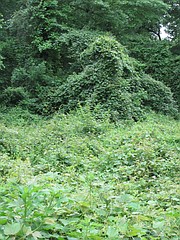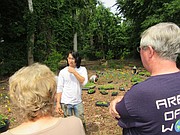On May 9 and June 9, 35 volunteers planted around 2,000 native trees and plants, 60 species, in the Dyke Marsh Wildlife Preserve, an initiative of the Friends of Dyke Marsh (FODM) and their partners, the National Park Service, Earth Sangha and the Audubon Society of Northern Virginia (ASNV). The .65-acre site was previously overwhelmed with non-native or invasive plants, like English ivy, mile-a-minute and stiltgrass.
Many invasive plants reproduce rapidly, outcompete natives and have no natural controls to keep them in check. Native species occur naturally in an area, enable a healthy, functioning ecosystem and provide more support for the native insects, birds and other wildlife with which they co-evolved.
FODM received grants from the National Environmental Education Foundation, Transurban, ASNV and Earth Sangha and member donations to purchase plants.
The Dyke Marsh Wildlife Preserve, a National Park Service unit of the George Washington Memorial Parkway, is a freshwater, tidal marsh on the Virginia side of the Potomac River in Fairfax County near Alexandria. For more information, visit www.fodm.org and www.nps.gov/gwmp.


